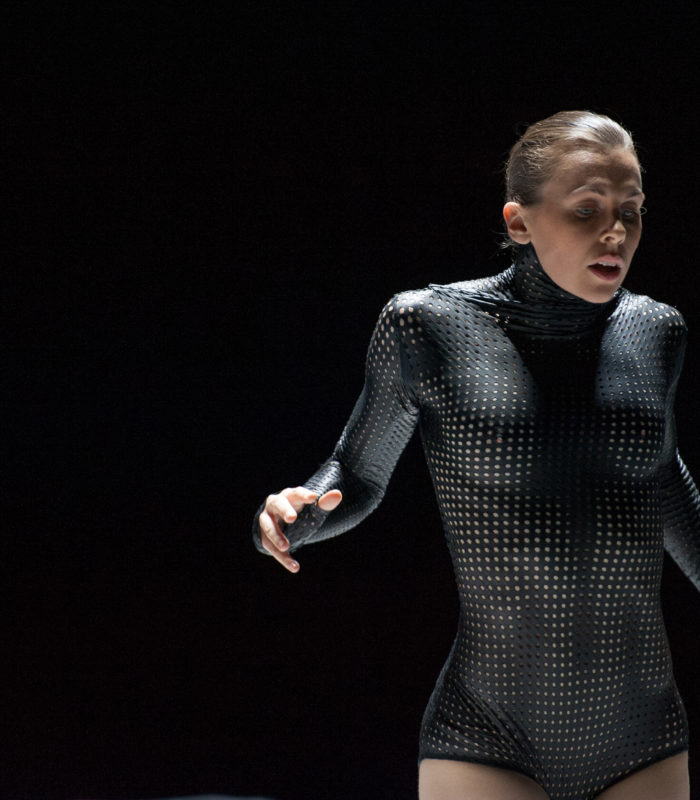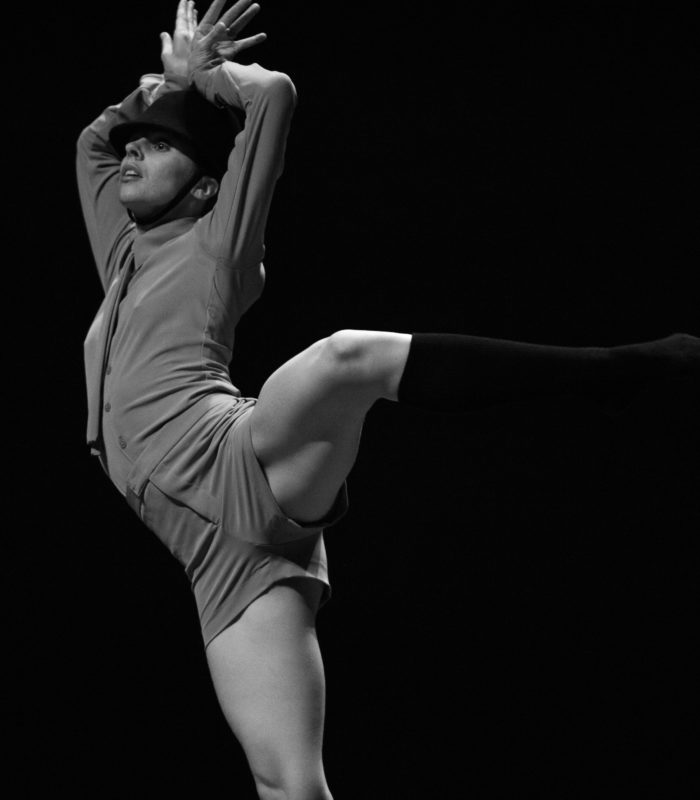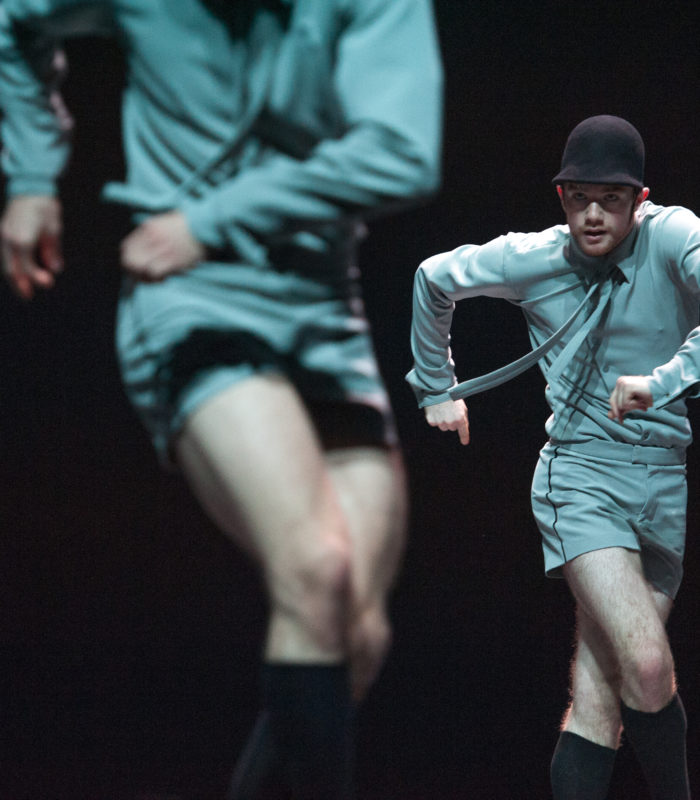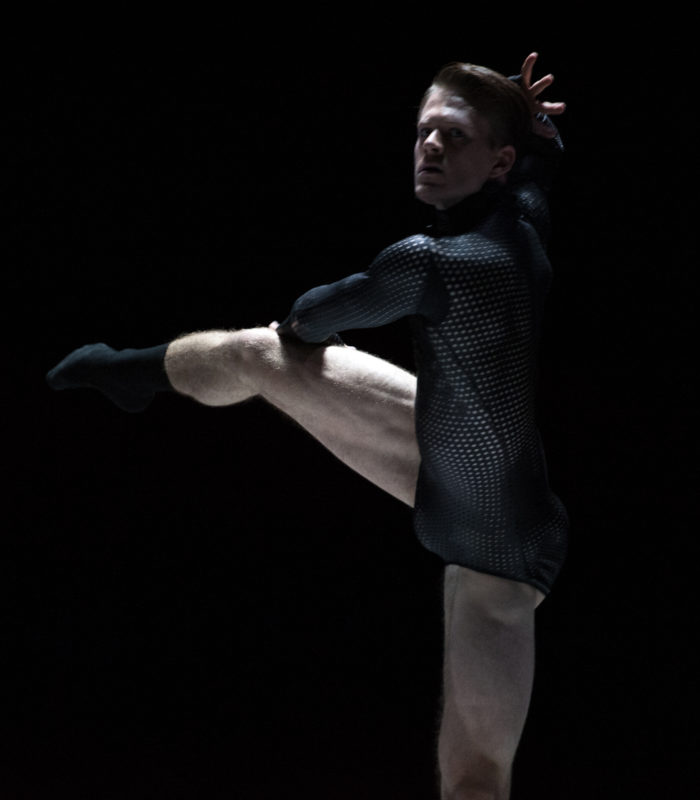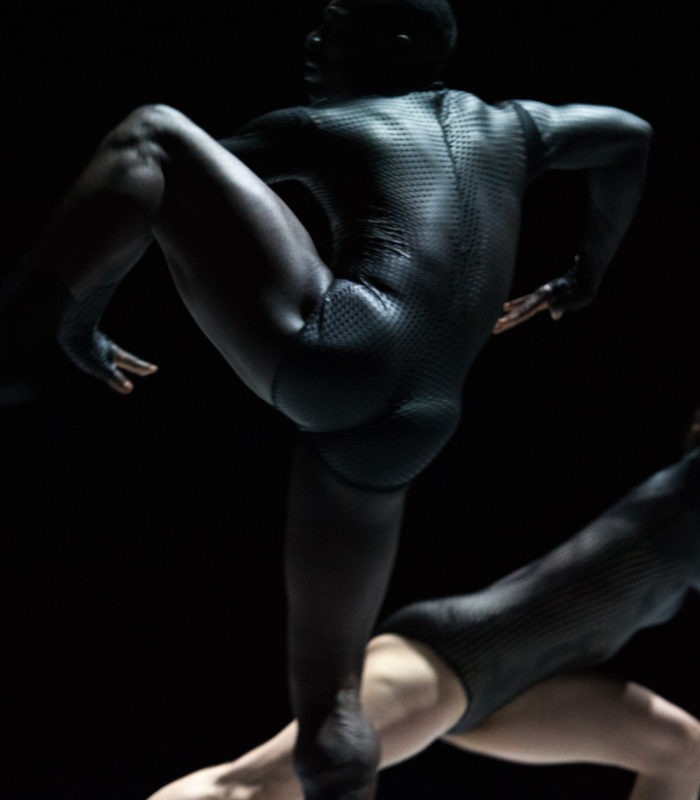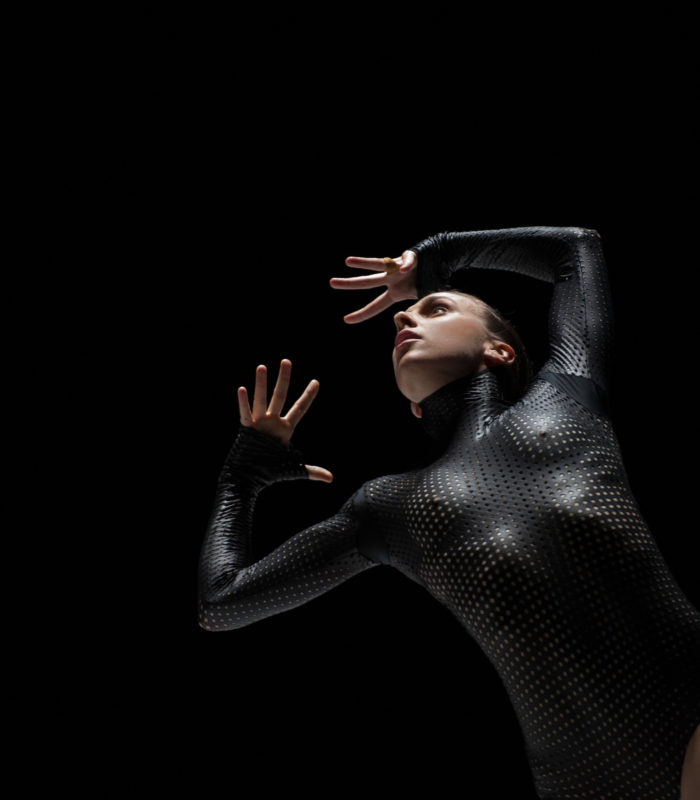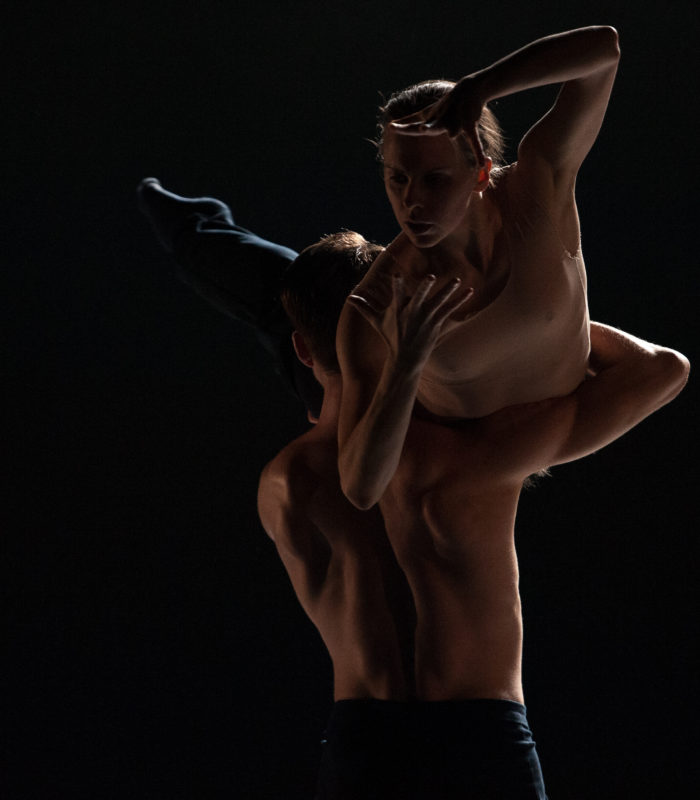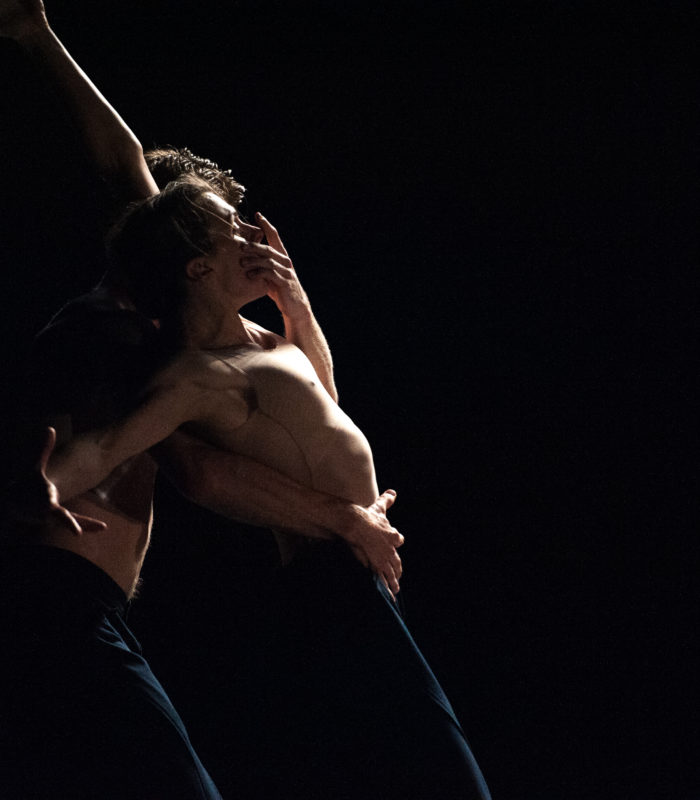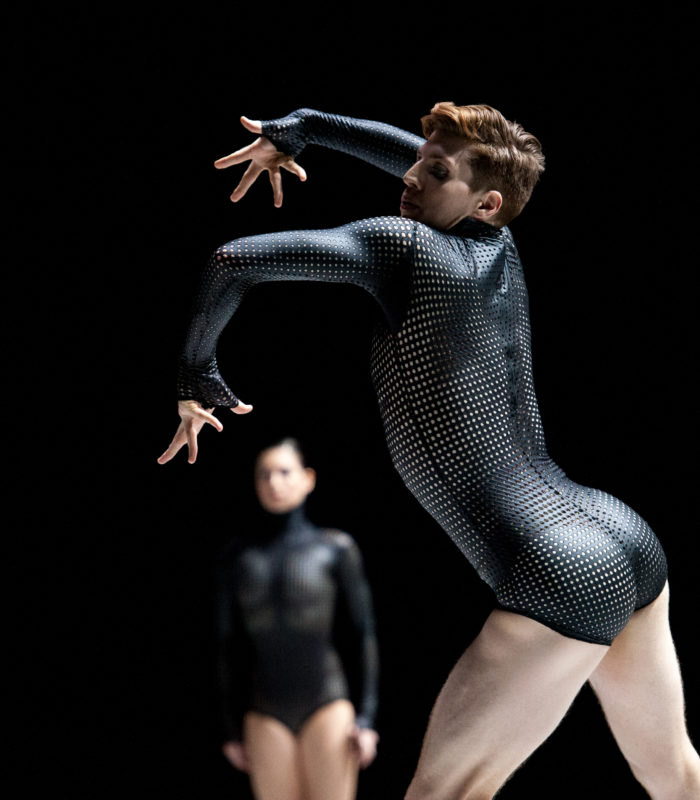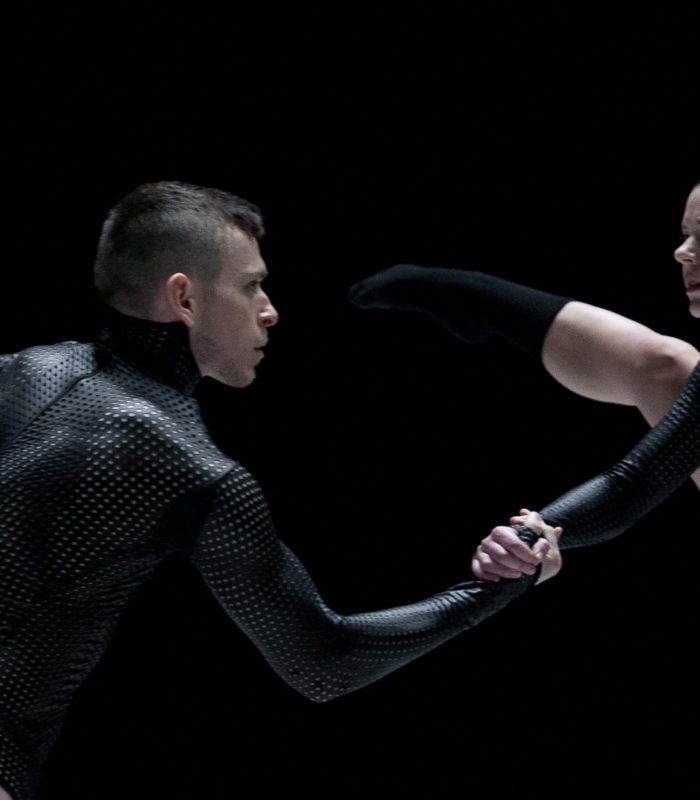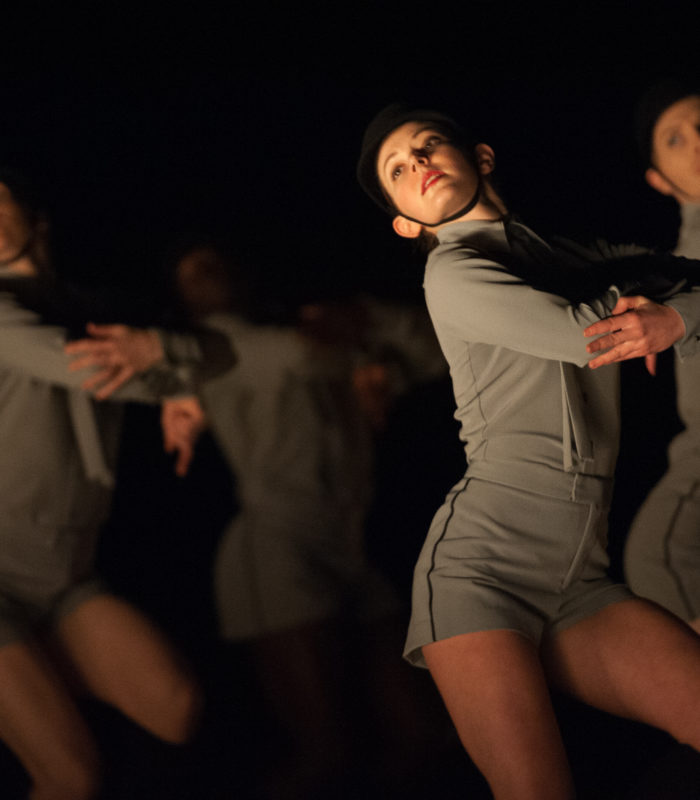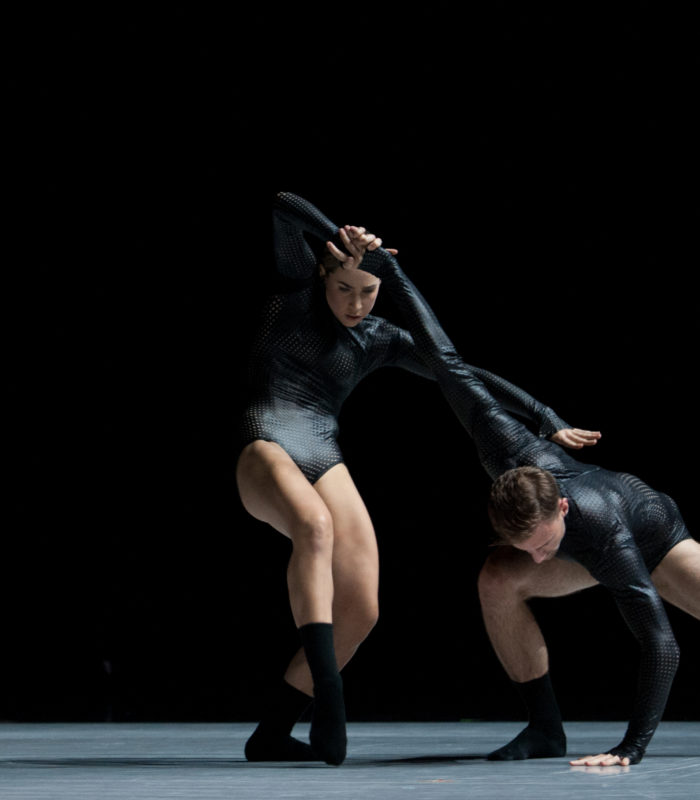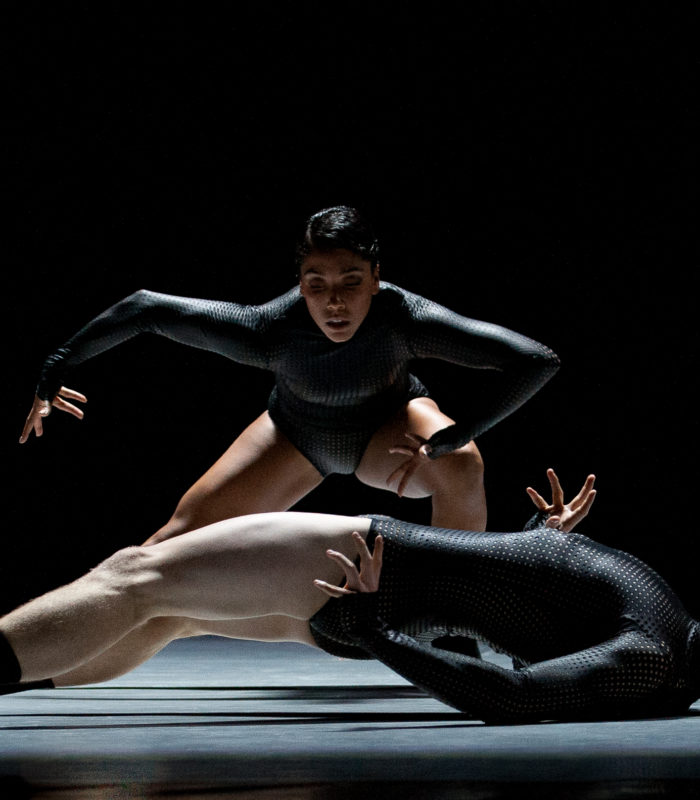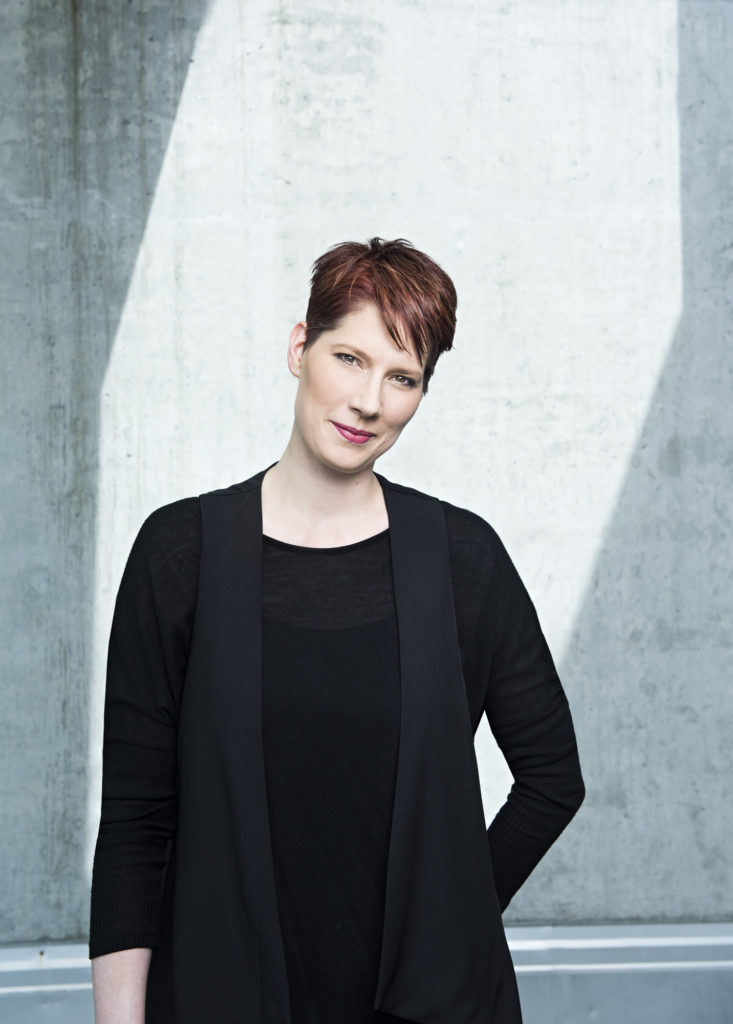
If you’ve been to a Ballet BC show before you’ve likely spotted the confident form of the dance company’s Artistic Director hovering over Queen E’s decked out, hustling-bustling crowd, making sure the evening is rolling like a well-oiled machine. Her shiny, auburn hair, cut short, and the sound of her snappy high heels, usually give her away. She is everywhere at once, never missing a beat, but always graceful like a butterfly. Emily Molnar is the Canadian dancer who changed what dance means to Vancouver. She took the reins of the celebrated local Ballet company in 2009 and steered it into the direction of modernity and never before seen creativity. A National Ballet School graduate, Molnar is a critically acclaimed dancer who has worked with illustrious companies like the National Ballet of Canada, Frankfurt Ballet, Alberta Ballet, Ballet Mannheim, Ballet Augsburg, Cedar Lake Dance, Pro Arte Danza and Morphoses/The Wheeldon Company. Seven years later Molnar still finds ways to make our jaws drop, season after season, show after show. Ballet BC has become a global force in the arenas of dance and art, thanks to its showcasing of fearless talent from all over the world. When you go to a Ballet BC show, you see sights that are fresh, thematically and aesthetically. As the opening run of the 2016/2017 season looms in the form of Program 1 at the Queen Elizabeth Theatre (on the 3rd, 4th and 5th of November), we caught up with Molnar to ask her about the three shows she has in store for us this year, along with questions about her thoughts on integrity, politics, pushing boundaries, our eclectic home city and slaying it in the world of dance as a talented woman in a leadership position.
Could you tell us a little about Program 1 and the themes you have chosen to explore in the show?
I sometimes curate evenings according to themes but I mostly allow for freedom and diversity within every choreographic voice. Choreographers come with their own ideas for themes. I let the program breathe in that way. Program 1 is centred around our resident choreographer, Cayetano Soto and is all in his voice. You will see quite a bit of breadth in expression. Cayetano has gone through some recent health issues so his first piece in the evening is about transition and new beginnings. He had a near death experience so the dance is about the aftermath of that event. The second part of the evening features Cayetano’s 4th piece of choreography, which he created when he was dancing for the National Ballet of Munich. Cayetano’s father was very ill then and he passed away a couple of days before the premiere of the piece. You can see the spirit of Cayetano’s relationship with his father and the moment of saying goodbye, in the dance. The piece has been passed on to many companies around the world and it’s so relevant and poignant. Coupled with it in the same evening, is a duet that he made for Ballet Hispanico. In this piece, he talks about the circles of relationships, about continuity and how we unite as people. The last piece Schachmatt, which means checkmate in German, is based on a piece he did for Erich Gauthier’s company called Conrazoncorazon. It’s a very charming, whimsical and elegant work that is sophisticated at the same time. You go through a whole range of emotions throughout the evening and that’s just in one person’s voice, which is really beautiful to see.
Program 1, 2016 – Trailer from Ballet BC on Vimeo.
What is Program 2 about?
That evening is about BC talent and celebrating Canada’s 150th anniversary. We wanted to give a platform to the incredible talent that we have right here in our home city. You will see Company 605 who has never had the opportunity to work on a commission from another company before. They’ve never worked on the Queen E stage or with a Ballet company. The evening continues with work from Wen Wei Wang, who’s had great history here in the city as a former Ballet BC dancer. Then there is work by Leslie Telford. And with Crystal Pite it’s about BC and Vancouver talent. With Program 2 we wanted to create new relationships and allow local talent to explore their creativity.
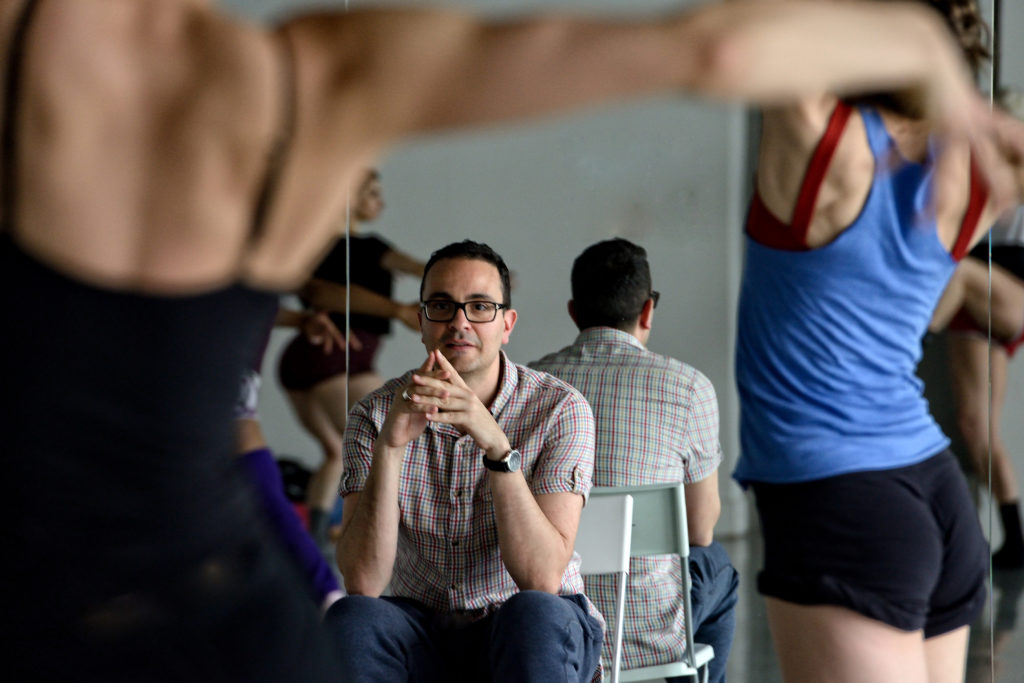
How do you conclude the season with Program 3?
In Program 3 we show new voices and bring in people from the international dance community that I’ve really been wanting to work with, like Ohad Naharin and his enormous voice. We’re doing his masterwork, Minus 16. There’s audience participation in that work too. It’s a very dynamic piece. It gives the dancers an opportunity to explore the movement language of “Gaga” that Ohad has been working on. I didn’t do it on purpose but like Ohad, Emanuel Gat is also Israeli, although based out of France. I wanted to get an existing work of his but he said he wanted to create something new with us.
I always want to introduce new voices to our audiences and foster global conversations about dance. We’re bringing Vancouver and Canada abroad but also bringing the world together. There really are no boundaries in art making, especially in dance, as it is a small community. Another pleasure of that evening is my doing a piece with the National Art Centre in Ottawa, for their 150th anniversary. They are commissioning an evening that will bring three Ballet companies in Canada together- the National Ballet of Canada, Alberta Ballet and Ballet BC. The program will see three new choreographies by three Canadian choreographers and three Canadian composers, with the National Arts Centre Orchestra. For my piece, I am honoured to work with Nicole Lizée who is a brilliant Montréal-based, Saskatchewan-born composer. I love our Saskatchewan connection. Program 3 doesn’t have an overarching theme but it represents the variation of voice and ideas that I try to bring to each evening.
What drives you to modernise Ballet and experiment with music and with so many different genres of dance?
I don’t aim to push the boundaries, I aim to question why we do what we do and how we do it because I want to learn. Comfort to me is a word I don’t enjoy. I love pushing myself and pushing my understanding of the world, so I can be of better service to help social movements along. That’s my modus operandi: to participate in helping.
I love seeing a body in motion reaching a universal place where pure energy is connecting. I love to dance. Something made sense to me in the world when I was dancing at a very young age. What propels me is seeing how much potential there is in art making. Dance is such a powerful action because it requires so much of an individual to show up. It requires an enormous amount of physical capability, awareness, and intellect. And different types of intellect that too- logical, spatial, emotional. There is also a spiritual aspect to the work where you have to believe in something before it can exist. It’s an act of navigating creativity, imagination, and fantasy, as well as articulating meaning in the world. Dancers act at an extremely high level of consciousness when they dance. And as a choreographer, you’re constructing something that affects another human body, as well.
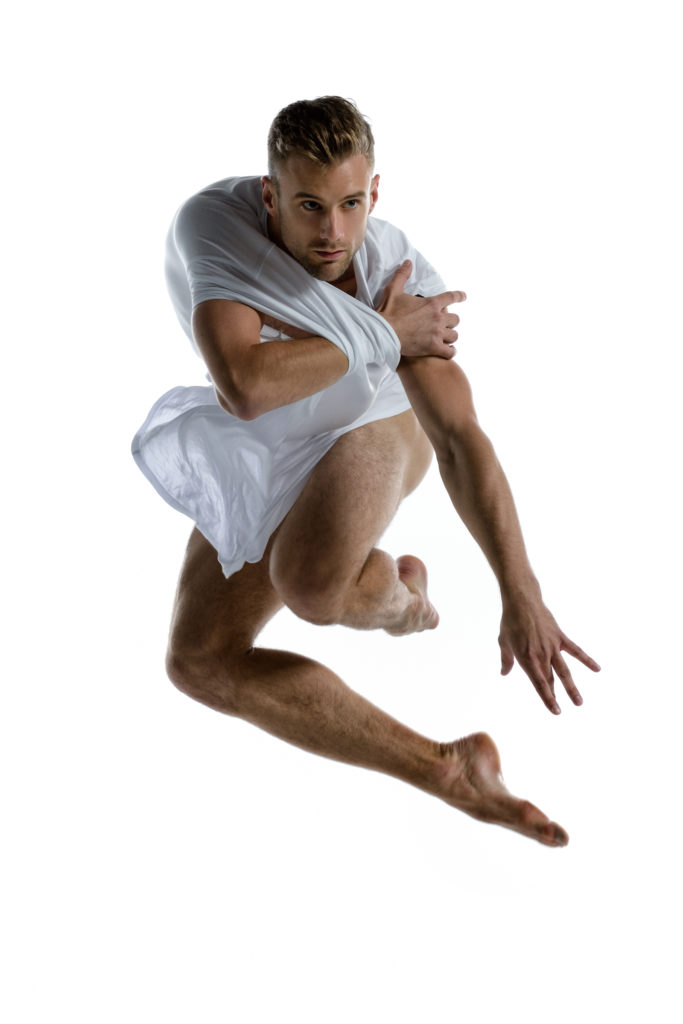
Did you face any backlash when pushing the boundaries in such a traditional field of dance?
Ballet is a really hard enterprise. It takes an enormous amount of training so to just destroy that for no reason doesn’t make sense. It has existed for so many years because it’s a challenge. There’s something exhilarating about its articulation and grandeur. There’s courage in Ballet, in jumping and leaping and opening up to the world. There’s an abandonment. Things sometimes work and sometimes they don’t. We pass on the ideas and language of Ballet as teachers and choreographers. Every time we pass something on though, we want to look at it and go, “Is it still working?” I’m not interested in saying no! to Ballet because a lot of what we do depends on that training. Ballet is at the very root of our dancers. It may not be what they’re saying on stage but their training helps them do what they are doing.
The only way you can deconstruct something is by knowing it inside out. I hold on to Ballet in order to challenge it. I like asking what the body is capable of. What can we express through the body in space and time? Ballet has been a tool for us to exercise that question. We’re trying to make great ideas come to life. Everyone can move because we are all dancers, but if you want to express everything that’s going on inside of you then additional training at a high level is required. That could mean standing on stage for three hours. It takes training for a dancer to say, “I’m not going to move right now” because then they know how to move. Which is a comment I have about contemporary dance in general. It’s not about destroying something but taking something else further along. What can we compositionally do in space and time? How can we advance choreographic thinking? How can we advance the potential of the expression of the body? How can we advance collaboration as a culture in making dance? What is performance vs. process? These are things we are curious about and by constructing a piece we get to answer these questions. It gives us a topic of conversation, an arena. It lets us activate the question instead of just postulating it.
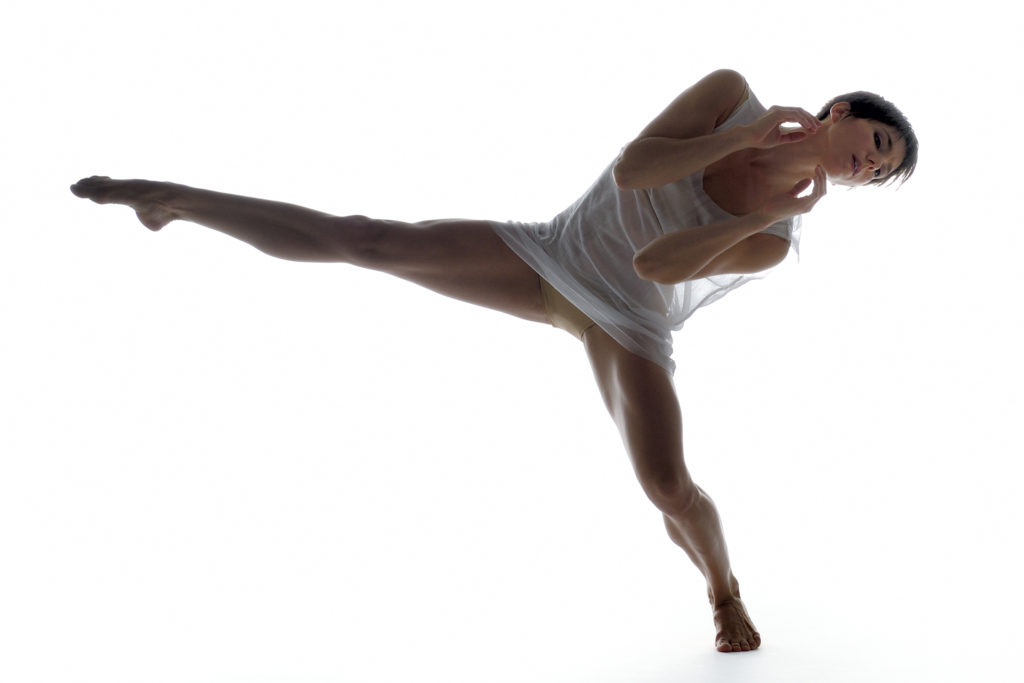
You’ve made Ballet accessible to everyone, especially the youth. You’ve taken away its elitist quality and made it less fussy. You frequently play with gender and other topical themes, as well. Do you seek to communicate social messages through your curation?
I’m interested in creating an environment where people can show up, interpret, learn and participate in the ideas of our dances. I like that sometimes the work can lead people to opening up to new thoughts and ideas. But we’re not enforcing anything. We want to give people breathing room to go where they want to go. There are certain pieces like my RITE piece where there was a lot of androgyny on purpose. I wanted to give people room to play with that idea within themselves.
The choreographers we work with are people who care about the world we live in and are thinking, feeling, breathing human beings, so I think it all comes through in their compositions. Sometimes it’s more subconscious and sometimes deliberate. I wouldn’t say we’re making political work but we echo what we are seeing in the world. When we did Giselle, we showed Hilarion and Albrecht being in love. I love that we as a dance company can explore that. We’re not trying to change people. I would like to participate if there is a change in the world that is needed and help that process along.
At Ballet BC we have a very democratic art making system. We don’t have a range of soloists and principal dancers. Men and women are paid equally and on their experience. So whether you are on stage or not, you participate in the making of the work and you are treated equally. All our choreographers are responsible and respectful individuals who really do care about the message they are sending to their audience.
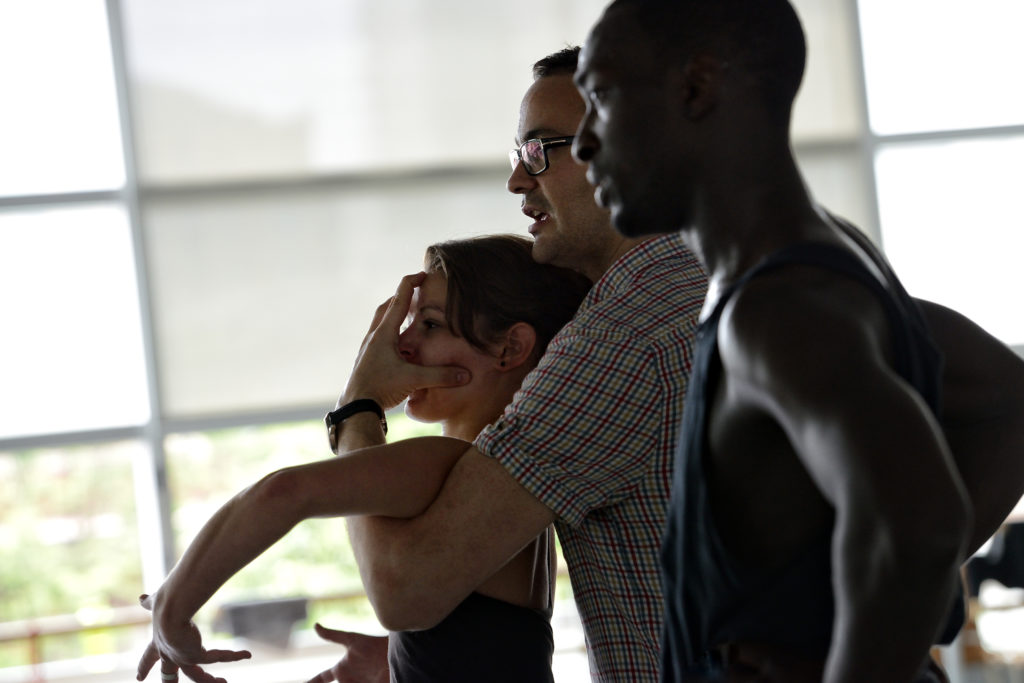
How do you cultivate relationships with the choreographers and the dancers?
I think it’s really important. It’s daily maintenance and not management. I try to create a space where people can take leadership in whatever form that might be for them. Some people might come to the forefront others might go to the back. Everybody is important. It’s about finding an environment of trust so people know how to push themselves.
The goal is to make ideas come to life and see them to their highest potential. But in the process of doing that, each individual is going to rise their own occasion. In that courage and risk-taking, you will fail, you will fall, there will be great moments and really difficult moments. There will be moments where you don’t know why you’re doing it and moments where it all makes sense. It’s all a part of being an artist and being a human being. It’s not easy. It’s about being honest, and developing yourself through the process of art making. I remind the dancers that and myself. There are fires to put out and then there are miracles that happen all the time. That process brings out the best in all of us.
You’re a role model, especially for women in leadership positions. How did you overcome the challenges in your career?
My greatest fight has been with myself! I think I’ve been my own worst enemy and been really critical of myself. Of course, there have been challenges but there has also been an enormous amount of support from people who have given me a lot of opportunity. Like the Malcolm Gladwell books suggest, one can work really, really hard, but you need opportunities, otherwise it doesn’t go anywhere.
I’m 6 feet tall. That wasn’t exactly ideal at first. That was my own silent fight, I didn’t realise it till much later. But I still somehow made it into the profession. There have been a lot of people who thought outside the box for me and took major risks for me. I’m in a leadership role but I always feel like a student rather than a teacher, and maybe that helps. I question myself and my relevancy. How am I doing? Can I do it better? Often I’ve thought that maybe I should be doing something else. I’d then ask myself, “what’s really the issue here? Is it you vs. yourself? Or is it the actual art?” and every time I went to that deeper place I realised that dance has never let me down. It’s just the politics at times and my own fears.
What has helped me the most is that my instinct, my love, and passion for the art, are greater than my own insecurities. I’m not cynical. I refuse to be! The obstacles have been there to also make me learn. Were they there because I’m a woman? I would be naïve to say that there was none of that at play. But I think we have great female examples of directors, choreographers, and dancers. We are a profession that is female dominated. But I do recognise that all even though most Ballet companies in Canada were founded by women, most are still run by men. I’m really happy to be a female running a Ballet company.
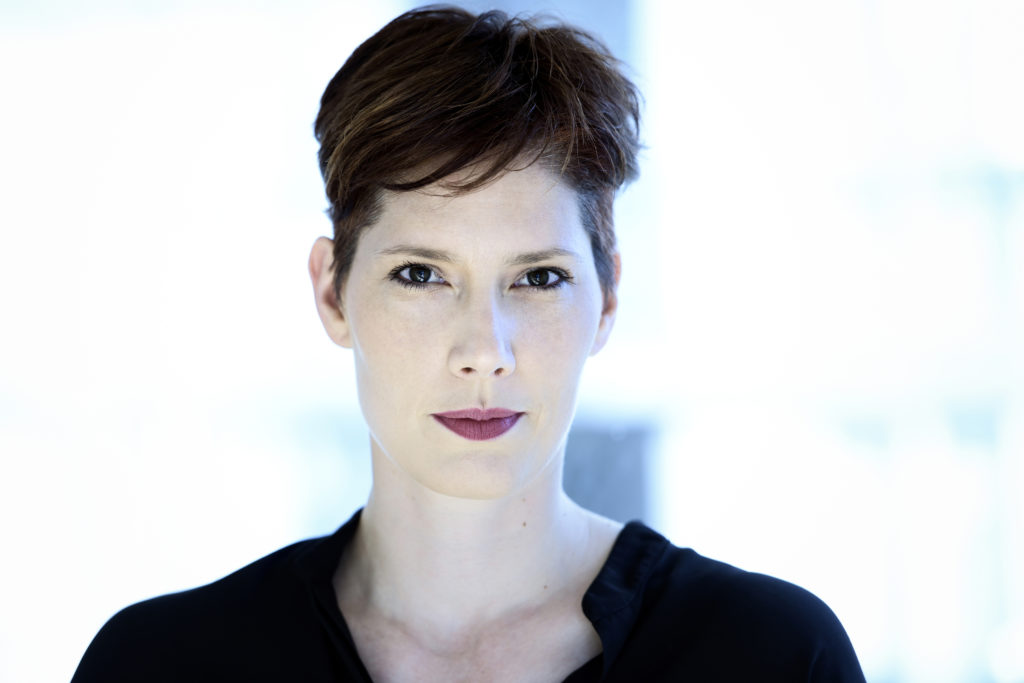
How do you find inspiration for your choreography and while curating shows?
From everywhere and in everybody. I’m always looking and participating in what’s going on in the world of dance. That really excites me. I love architecture and literature and music. Visual arts. Walking along our seawall. Seeing the seasons change and seeing faces on the street. Making sure that I don’t make it bigger than it is. I listen to what’s going on in the world. Love the radio. Love CBC. Staying connected to the ways other people are doing things. What are people seeing? How is technology changing? How are we changing technology? You just have to look and listen and the world is so rich. I was actually listening to a podcast the other night, about the world and evolution, and how none of it would exist if there weren’t any observers to see it happen. It was about the consciousness of our reality. I’ve been reading Slavoj Žižek who is a socio-political philosopher and I’m a big fan of Pema Chodron who is a Buddhist nun. I also love poetry. I usually have a stack of books going all at once. I just got a book from John Cage, his silent book which I’ve never attempted.
When you’re not dancing what do you like to do?
I love a good coffee and I love to journal or research the things that I’m reading. I love a good croissant. We’ve got fabulous restaurants and cafes in the city. I love walking along Jericho beach, visiting the Granville Island Market. I live in the Cambie Village so we’ve got a wonderful area there as well. When I get some time with my partner I love just walking and enjoying the city. That’s something I don’t get time to do! We have so much in our city. We have the VAG, so many shows, not just dance. We have a really vibrant city, and I don’t say that lightly. And we have people who really care and are curious. That gives us so much potential to share ideas in different ways. I feel lucky to be here in Vancouver and Canada, at this time. To be able to contemplate these things itself means we are pretty darn lucky!
Get your tickets to Program 1 now! http://balletbc.com/performance/program-1-2016/
-Prachi Kamble

